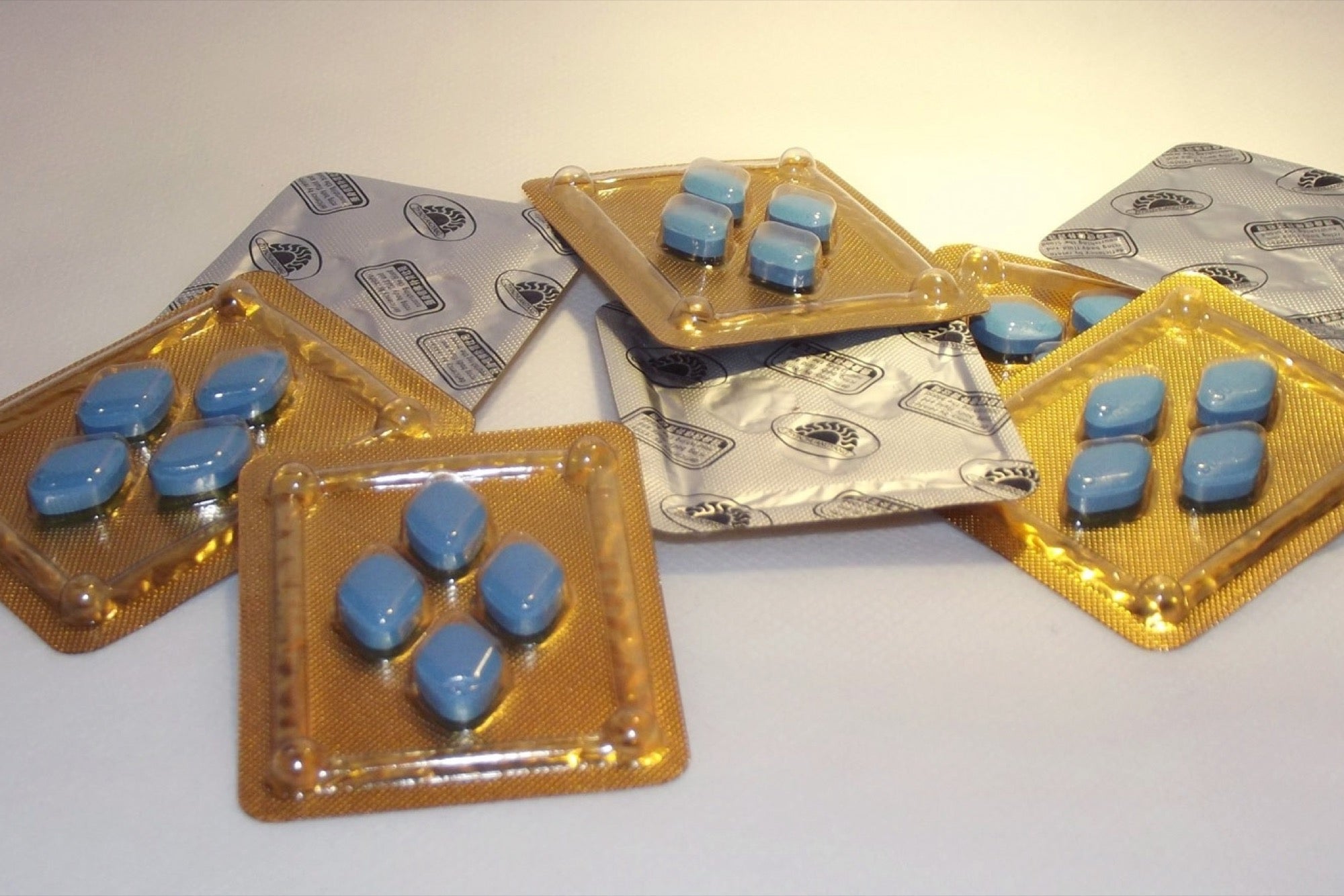The Hard Truth: What Viagra Was Really Intended For The original idea for Pfizer's famous little thrill pill has nothing to do with keeping it up.
Opinions expressed by Entrepreneur contributors are their own.

The real story behind America's most-prescribed treatment for erectile dysfunction is anything but sexy. In fact, its origins are a bit of a downer.
The potent passion pill was originally designed to ease physical troubles of a different kind, not to do the lusty job it gives millions of men a lift with now.
It all started in 1985, when Pfizer chemists Albert Wood (yes, that's his real last name) and Peter Dunn developed a drug called sildenafil citrate. They thought it would be helpful in lowering high blood pressure and treating angina. Little did they know they had their hands on the beginnings of what would eventually become the world's first oral elixir for impotence -- Pfizer's little blue thrill pill.
Related: Too Busy to Get Busy? 3 Tips for a Better Sex Life.
In the early 1990s, Pfizer began clinical trials in Britain for the drug, which by then it had named Viagra. At first, the experiments seemed like business as usual. Then something strange and unexpected started happening. The test subjects began reporting some very peculiar -- and titillating -- side effects.
While Viagra wasn't as effective in treating cardiovascular diseases as researchers had hoped, it was exceptionally potent at doing something else: opening up the arteries in the penis and flooding erectile tissue with blood.
In other words, it got men hard -- sometimes for up to four consecutive hours.
Related: The Woman Who Brought 'Female Viagra' to Market Is Stepping Down as CEO of Sprout Pharmaceuticals
"People didn't want to give the medication back because of the side effect of having erections that were harder, firmer and lasted longer," Pfizer senior medical director Dr. Brian Klee told the Agence France-Presse.
The researchers knew they were on to something huge. They'd concocted some seriously powerful stuff, strong enough to give aging men their mojo back, typically within 30 to 60 minutes of taking the pill. Sensing a revolutionary hit, Pfizer immediately scrapped testing Viagra as a heart medication and pursued it hard and fast as a remedy for erectile dysfunction.
By 1993, tests to see if Viagra could be used to treat erectile dysfunction began. They included some 3,000 patients, ages 19 to 87 years old. Time and again, in 21 separate trials, it was shown to be effective.
Fast forward to 1996, and the New York City-based pharmaceutical giant scored a critical patent for the revolutionary drug. Its next big win in bringing it to market came on March 27, 1998, when the FDA officially approved its use as a treatment for impotency.
Related: Pfizer to Buy Botox Maker Allergan in Massive $160 Billion Deal
From there, the floodgates burst open. Pharmacists across America scrambled to keep up with the consumer demand for the new diamond-shaped doozie. The drug clinched the record for the most prescriptions written during its launch week, according to the Los Angeles Times. In its first few weeks on the market alone, an estimated 40,000 prescriptions for Viagra were filled.
When all was said and done, it was the largest drug launch in history.
The buzz around the groundbreaking virility enhancer quickly reached a fever pitch. In an article headlined, "The Globe is Gaga for Viagra," Newsweek called Viagra the "hottest new drug in history almost everywhere in the world, including many countries where it's not yet legal for sale."
Related: 4 TED Talks About Love, Sex and Desire
A veteran Playboy columnist predicted that the controversial medication would be "as monumental as the birth-control pill," and the publisher of Penthouse hailed it as a macho wonder drug that would "free the American male libido" from the feminists who sought to "emasculate" them.
By 2001, Viagra was an all-out global phenomenon. Annual sales of the drug skyrocketed past the $1 billion mark, making it one of the highest grossing prescription drug's Pfizer has ever created.
As for the name Viagra, some say it was coined to suggest virility and vigor. Others claim it's no accident that it rhymes with the forceful, gushing falls of Niagara. Pfizer isn't saying. Price-wise, it's no cheap thrill, often costing between $34 to $40 per pill, even with insurance coverage.
Related: Playboy CEO: Nudity Could Completely Vanish From the Brand
Like most great inventions, Viagra was copied. Bayer Corporation's Levitra, which also gives rise to erections lasting up to four hours, was approved by the FDA in 2003. Then, two months later, came Lilly USA's Cialis, the so-called "weekend pill," which can be effective for up to a whopping 36 hours. Viagra is also, of course, widely counterfeited and knocked-off, with countless fakes and herbal wannabes constantly making the rounds.
Competitors and phonies aside, Pfizer's real-deal blockbuster pill remains one of the top-selling prescription drugs today, nearly 18 years after it took the world by storm, reigniting the sex lives of millions of men (and their partners) and spawning a multi-billion dollar industry.
Not bad for a tiny tablet originally created to cure chest pains.
(We reached out to Pfizer for clarification of some of the facts included in this story, but the company declined our request.)
Related: Great Entrepreneur, Lousy Lover?









